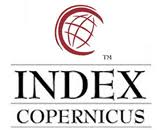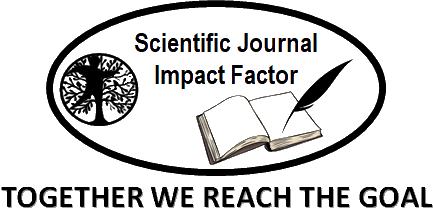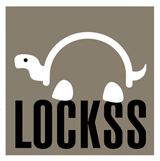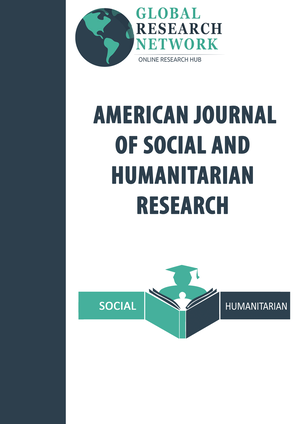Teachers’ Perspectives on Artificial Intelligence in Literary Education: Opportunities and Challenges in the Digital Age
Abstract
Keywords
Full Text:
PDFReferences
S. Athanassopoulos, P. Manoli, M. Gouvi, K. Lavidas, and V. Komis, “The use of ChatGPT as a learning tool to improve foreign language writing in a multilingual and multicultural classroom,” Adv. Mob. Learn. Educ. Res., vol. 3, no. 2, pp. 818–824, Aug. 2023, doi: 10.25082/AMLER.2023.02.009.
E. Reyes-Villalba, R. E. Reyes-Arco, and B. Maraza-Quispe, “Educational Practices and the Use of Artificial Intelligence: A Multifaceted Analysis in the Current Context,” Rev. Gestão Soc. e Ambient., vol. 18, no. 8, p. e05875, Apr. 2024, doi: 10.24857/rgsa.v18n8-017.
K. Peng et al., “Towards Making the Most of ChatGPT for Machine Translation,” Find. Assoc. Comput. Linguist. EMNLP 2023, pp. 5622–5633, 2023, doi: 10.2139/ssrn.4390455.
F. K. Ramadhan, M. I. Faris, I. Wahyudi, and M. K. Sulaeman, “PEMANFAATAN CHAT GPT DALAM DUNIA PENDIDIKAN,” J. Ilm. Flash, vol. 9, no. 1, p. 25, Jun. 2023, doi: 10.32511/flash.v9i1.1069.
L. Chen, P. Chen, and Z. Lin, “Artificial Intelligence in Education: A Review,” IEEE Access, vol. 8, pp. 75264–75278, 2020, doi: 10.1109/ACCESS.2020.2988510.
A. I. Al-Ma’ruf, Z. Arifin, and F. Nugrahani, “Exploring ethical frontiers: Moral dimensions in the tapestry of contemporary Indonesian literature,” Stud. English Lang. Educ., vol. 11, no. 1, pp. 587–604, Jan. 2024, doi: 10.24815/siele.v11i1.35142.
G. Lazar, “Literature and language teaching: A guide for teachers and trainers,” Cambridge UP, 1993.
F. J. Cantú-Ortiz, N. Galeano Sánchez, L. Garrido, H. Terashima-Marin, and R. F. Brena, “An artificial intelligence educational strategy for the digital transformation,” Int. J. Interact. Des. Manuf., vol. 14, no. 4, pp. 1195–1209, Dec. 2020, doi: 10.1007/s12008-020-00702-8.
S. Iasechko and M. Iasechko, “The Role and Impact of Artificial Intelligence In Modern Education: Analysis of Problems and Prospects,” Rev. Artif. Intell. Educ., vol. 5, Feb. 2024, doi: 10.37497/rev.artif.intell.educ.v5i00.26.
T. Alqahtani et al., “The emergent role of artificial intelligence, natural learning processing, and large language models in higher education and research,” Res. Soc. Adm. Pharm., vol. 19, no. 8, pp. 1236–1242, Aug. 2023, doi: 10.1016/j.sapharm.2023.05.016.
N. Oh, G.-S. Choi, and W. Y. Lee, “ChatGPT goes to the operating room: evaluating GPT-4 performance and its potential in surgical education and training in the era of large language models,” Ann. Surg. Treat. Res., vol. 104, no. 5, p. 269, 2023, doi: 10.4174/astr.2023.104.5.269.
Z. N. Ghafar, “ChatGPT: a new tool to improve teaching and evaluation of second and foreign languages a review of ChatGPT: the future of education,” Int. J. Appl. Res. Sustain. Sci., vol. 1, no. 2, pp. 73–86, 2023.
A. Arora, M. Barrett, E. Lee, E. Oborn, and K. Prince, “Risk and the future of AI: Algorithmic bias, data colonialism, and marginalization,” Inf. Organ., vol. 33, no. 3, p. 100478, Sep. 2023, doi: 10.1016/j.infoandorg.2023.100478.
R. Luckin, M. Cukurova, C. Kent, and B. du Boulay, “Empowering educators to be AI-ready,” Comput. Educ. Artif. Intell., vol. 3, p. 100076, 2022, doi: 10.1016/j.caeai.2022.100076.
Y. Liu et al., “Summary of ChatGPT-Related research and perspective towards the future of large language models,” Meta-Radiology, vol. 1, no. 2, p. 100017, 2023, doi: 10.1016/j.metrad.2023.100017.
A. Alam, “Should Robots Replace Teachers? Mobilisation of AI and Learning Analytics in Education,” in 2021 International Conference on Advances in Computing, Communication, and Control (ICAC3), IEEE, Dec. 2021, pp. 1–12. doi: 10.1109/ICAC353642.2021.9697300.
G. P. Barrera Castro, A. Chiappe, D. F. Becerra Rodriguez, and F. G. Sepulveda, “Harnessing AI for Education 4.0: Drivers of Personalized Learning,” Electron. J. e-Learning, vol. 22, no. 5, pp. 01–14, Apr. 2024, doi: 10.34190/ejel.22.5.3467.
A. Imron A.M. and F. Nugrahani, “STRENGTHENING PLURALISM IN LITERATURE LEARNING FOR CHARACTER EDUCATION OF SCHOOL STUDENTS,” Humanit. Soc. Sci. Rev., vol. 7, no. 3, pp. 207–213, Apr. 2019, doi: 10.18510/hssr.2019.7332.
H. Crompton and D. Burke, “Artificial intelligence in higher education: the state of the field,” Int. J. Educ. Technol. High. Educ., vol. 20, no. 1, p. 22, Apr. 2023, doi: 10.1186/s41239-023-00392-8.
D. A. Endovitskiy and K. A. Gaidar, “University Science and Education in the Context of Artificial Intelligence,” Vyss. Obraz. v Ross. = High. Educ. Russ., vol. 30, no. 6, pp. 121–131, Jul. 2021, doi: 10.31992/0869-3617-2021-30-6-121-131.
A. J. Lakshmi, A. Kumar, M. S. Kumar, S. I. Patel, S. K. L. Naik, and J. V. N. Ramesh, “Artificial intelligence in steering the digital transformation of collaborative technical education,” J. High Technol. Manag. Res., vol. 34, no. 2, p. 100467, Nov. 2023, doi: 10.1016/j.hitech.2023.100467.
B. L. Moorhouse and L. Yan, “Use of Digital Tools by English Language Schoolteachers,” Educ. Sci., vol. 13, no. 3, p. 226, Feb. 2023, doi: 10.3390/educsci13030226.
A. Abulibdeh, E. Zaidan, and R. Abulibdeh, “Navigating the confluence of artificial intelligence and education for sustainable development in the era of industry 4.0: Challenges, opportunities, and ethical dimensions,” J. Clean. Prod., vol. 437, p. 140527, Jan. 2024, doi: 10.1016/j.jclepro.2023.140527.
W. Zhang, Y. Yang, and H. Liang, “A Bibliometric Analysis of Enterprise Social Media in Digital Economy: Research Hotspots and Trends,” Sustainability, vol. 15, no. 16, p. 12545, Aug. 2023, doi: 10.3390/su151612545.
H. Luo, Y. Li, and H. Yu, “Analysis of Policy Applications of Artificial Intelligence in Education,” Lect. Notes Educ. Psychol. Public Media, vol. 22, no. 1, pp. 295–302, Nov. 2023, doi: 10.54254/2753-7048/22/20230328.
K. Thammarak, P. Kongkla, Y. Sirisathitkul, and S. Intakosum, “Comparative analysis of Tesseract and Google Cloud Vision for Thai vehicle registration certificate,” Int. J. Electr. Comput. Eng., vol. 12, no. 2, p. 1849, Apr. 2022, doi: 10.11591/ijece.v12i2.pp1849-1858.
V. Shankar and S. Parsana, “An overview and empirical comparison of natural language processing (NLP) models and an introduction to and empirical application of autoencoder models in marketing,” J. Acad. Mark. Sci., vol. 50, no. 6, pp. 1324–1350, Nov. 2022, doi: 10.1007/s11747-022-00840-3.
K. Fitriana and L. Nurazni, “Exploring Students’ Perception of Using Grammarly to Check Grammar in Their Writing,” JET (Journal English Teaching), vol. 8, no. 1, pp. 15–25, Feb. 2022, doi: 10.33541/jet.v8i1.3044.
A. R. S. Tambunan, W. Andayani, W. S. Sari, and F. K. Lubis, “Investigating EFL students’ linguistic problems using Grammarly as automated writing evaluation feedback,” Indones. J. Appl. Linguist., vol. 12, no. 1, pp. 16–27, May 2022, doi: 10.17509/ijal.v12i1.46428.
S. A. Fauzan, S. R. Pradana, M. Hikal, M. B. Ashfiya, Y. I. Kurniawan, and B. Wijayanto, “Implementasi Game Development Life Cycle Model Pengembangan Arnold Hendrick’s Dalam Pembuatan Game Puzzle-RPG Enigma’s Dungeon,” J. Ilmu Komput. dan Inform., vol. 2, no. 2, pp. 113–126, Apr. 2022, doi: 10.54082/jiki.26.
V. E. Ibarra and A. I. Cárdenas, “Enhancing Critical Thinking Skills Through Socratic Seminars in EFL Classrooms,” Int. J. Learn. Dev., vol. 12, no. 4, p. 1, Oct. 2022, doi: 10.5296/ijld.v12i4.20385.
D. Shi, X. Xu, F. Sun, Y. Shi, and N. Cao, “Calliope: Automatic Visual Data Story Generation from a Spreadsheet,” IEEE Trans. Vis. Comput. Graph., vol. 27, no. 2, pp. 453–463, Feb. 2021, doi: 10.1109/TVCG.2020.3030403.
C. Janiesch, P. Zschech, and K. Heinrich, “Machine learning and deep learning,” Electron. Mark., vol. 31, no. 3, pp. 685–695, Sep. 2021, doi: 10.1007/s12525-021-00475-2.
M. Yousef and J. ALLMER, “Deep learning in bioinformatics,” Turkish J. Biol., vol. 47, no. 6, pp. 366–382, Dec. 2023, doi: 10.55730/1300-0152.2671.
T. Hollweck, “Robert K. Yin. (2014). Case Study Research Design and Methods (5th ed.).,” Can. J. Progr. Eval., vol. 30, no. 1, pp. 108–110, Mar. 2015, doi: 10.3138/cjpe.30.1.108.
F. Nugrahani, Metode Penelitian Kualitatif dalam Penelitian Pendidikan Bahasa, 1st ed. Surakarta: CakraBooks, 2014.
L. Cohen, L. Manion, and K. Morrison, Research Methods in Education. London: Routledge, 2017. doi: 10.4324/9781315456539.
M. Lisabella, “model analisis interaktif Miles and Huberman,” Univ. Bina Darma, vol. 3, 2013.
E. Bauer et al., “AI ‐Based Adaptive Feedback in Simulations for Teacher Education: An Experimental Replication in the Field,” J. Comput. Assist. Learn., vol. 41, no. 1, Feb. 2025, doi: 10.1111/jcal.13123.
DOI: http://dx.doi.org/10.52155/ijpsat.v54.1.7594
Refbacks
- There are currently no refbacks.
Copyright (c) 2025 Veronika Unun Pratiwi, Farida Nugrahani, Veronika Unun Pratiwi, Ali Imron A.M

This work is licensed under a Creative Commons Attribution 4.0 International License.



















